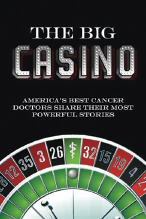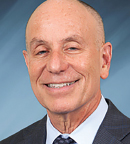The following essay by William N. Harwin, MD, is adapted from The Big Casino: America’s Best Cancer Doctors Share Their Most Powerful Stories, which was coedited by Stan Winokur, MD, and Vincent Coppola and published in May 2014. The book is available on Amazon.com and thebigcasino.org.
My wife left things for me, loving things. She divided her jewelry among our kids. There were lots of other things I didn’t know until afterward, very beautiful things.
I always knew I’d practice medicine. As a boy in the late 1950s, I’d tag along with my dad, a pediatrician, when he made house calls in Westbury, New York. At Baylor College of Medicine, I was first drawn to oncology’s challenges. Every day was a different day, always something new and difficult and interesting to figure out. As an intern, I met physicians who were bored with their work. I knew I’d never be.
Certainty served me well. The years ahead were fraught, as all lives are, with jubilant successes and milestones and disheartening setbacks. Medicine is very, very tricky. Oncology, in particular, is filled with speed bumps and hazards and things that can lead you in the wrong direction. Cures for many of the diseases I treat are still elusive—though we’re certainly doing a lot better than we used to. I want to be 100% perfect all the time.
In my lifetime, I’ve seen research breakthroughs slowly transform cancer—the “Emperor of All Maladies”—into a chronic illness, manageable in many cases and no longer a death sentence in the hearts and minds of my patients and their families. When I started in my practice, one new drug was approved every 2 or 3 years. Today, it’s almost one every 3 months.
I built my practice—Florida Cancer Specialists & Research Institute—from the ground up on a small line of credit and office space sublet from another physician. My wife, Marilyn, quit her job as a CT scan technologist at the University of Miami and worked for free for another oncologist to learn how to run a practice. Things were that tight; the path forward was not always clear.
As my patients’ needs and numbers multiplied, my professional distance (the imperative to address every patient’s problem as quickly and effectively as possible) diminished. The wall I’d carefully built to protect myself when the worst did happen, which allowed me to go on the next day and the next, began to crumble. Personal connection, humor, affection, and emotional outreach assumed their rightful place in my practice. I’m much more likely now to hug a patient or a spouse because I’ve learned how much it means to them.
The Facts of Life
Certainty is illusory. In 1996, my wife was 37 years old, and the anchor of our family. Marilyn was a free spirit, a beautiful woman with a magnetic personality. When she walked into a room, people always noticed her. I was aware Marilyn had a marked family history of breast cancer. I’d had her tested twice for the BRCA1 and BRCA2 genetic mutations, which are known to increase susceptibility to breast cancer fivefold. The tests were negative. I insisted she see a general surgeon for regular breast exams. One day, she went for a routine mammogram.
She had breast cancer.
I had to bring my wife into my office, my practice for treatment. The practice she and I had started together. One of my partners treated her, but I went with her to every CT scan…every PET scan…every doctor’s appointment. The tumor was fairly small; no lymph nodes were involved. Marilyn had radiation and started on a hormone therapy. I sought all sorts of expert opinions: she wasn’t even recommended chemotherapy.
Marilyn had a type of breast cancer, HER2-positive, that we now know a lot more about. HER2-positive is a very aggressive breast cancer, but very sensitive to chemotherapy, particularly in combination with trastuzumab (Herceptin), a kind of breast cancer miracle drug. HER2-positive makes up about 20% of all breast cancers. Had we been able to go back in time with the knowledge that we have now, my wife could have been cured. I’ve known this for a while. It’s just the facts.
The Pain of Failure
Marilyn’s cancer recurred in 1997. She had a mastectomy and later breast reconstruction. Almost 5 years after she was diagnosed, around 2001, she developed a recurrence with a bone metastasis. There are case reports of some people who can have a long-term survival with a solitary metastasis of breast cancer. I sought opinions from Memorial Sloan Kettering Cancer Center in New York, the University of Texas MD Anderson Cancer Center in Houston, and Dana-Farber Cancer Institute in Boston—literally the world’s leading experts in cancer. It wasn’t a solitary metastasis.
Of course, she knew she was going to pass away and took time to prepare. She wrote me a lot of notes and poems. She left things for me, loving things. She divided her jewelry among our kids. There were lots of other things I didn’t learn until afterward, very beautiful things.
Marilyn spent some time in a hospice center, but in the end, she wanted to be at home. I had a lot of help caring for her from family and friends. She was deteriorating fast, but I didn’t think her death was imminent. I thought she had weeks left and literally woke up one morning in bed and realized she wasn’t breathing. She was 49 years old when she died.
Like everyone always says in these situations, “You do what you have to do.” I did everything I could to try to help her and give her the best chance at survival. Those efforts proved so frustrating and so uncertain. ■
Dr. Harwin is President and Managing Partner of Florida Cancer Specialists & Research Institute in Fort Myers, Florida.



